15 Interior Design Styles every Designer should know
Discover 15 interior design styles with examples and tips to inspire your next interior design project and create spaces that truly shine.

Interior design styles are more than just aesthetics; they are reflections of personality, culture, and historical influences.
For interior designers, it’s capital to master various styles to create spaces that are not only functional but also match client’s personal tastes. And every client is different.
Whether it’s crafting a cozy, traditional living room or a sleek, modern kitchen, knowing the details and nuances of each style can make all the difference.
In this article, we explore 15 popular interior design styles, detailing their unique characteristics and offering practical tips on how to incorporate them into your projects.
Let's dive into them!
1. Modern Design

Modern design emerged in the early 20th century and is characterized by a preference for simplicity, functionality, and the absence of unnecessary decoration. It focuses on clean, straight lines and open spaces, often featuring materials like glass, steel, and concrete. Furniture and decor are minimal and typically feature neutral color palettes with bold accents.
Modern design is prevalent in urban apartments and homes across the world, especially in metropolitan areas like Los Angeles, Tokyo, and Berlin. High-rise condos and city lofts often feature modern interiors that emphasize open spaces and minimalist decor.
How to Use Modern Design in Your Project:
- Emphasize Open Spaces: Use open floor plans that allow for seamless flow between spaces.
- Choose Sleek Furniture: Select furniture with straight lines and minimal detailing.
- Incorporate Natural Light: Integrate large windows to maximize natural light and enhance the sense of openness.
- Focus on Functional Decor: Include only necessary decor elements that add value and maintain a clean aesthetic.
- Client Presentations: Use high-resolution photos and mood boards to showcase simplicity and functionality.
2. Contemporary Design
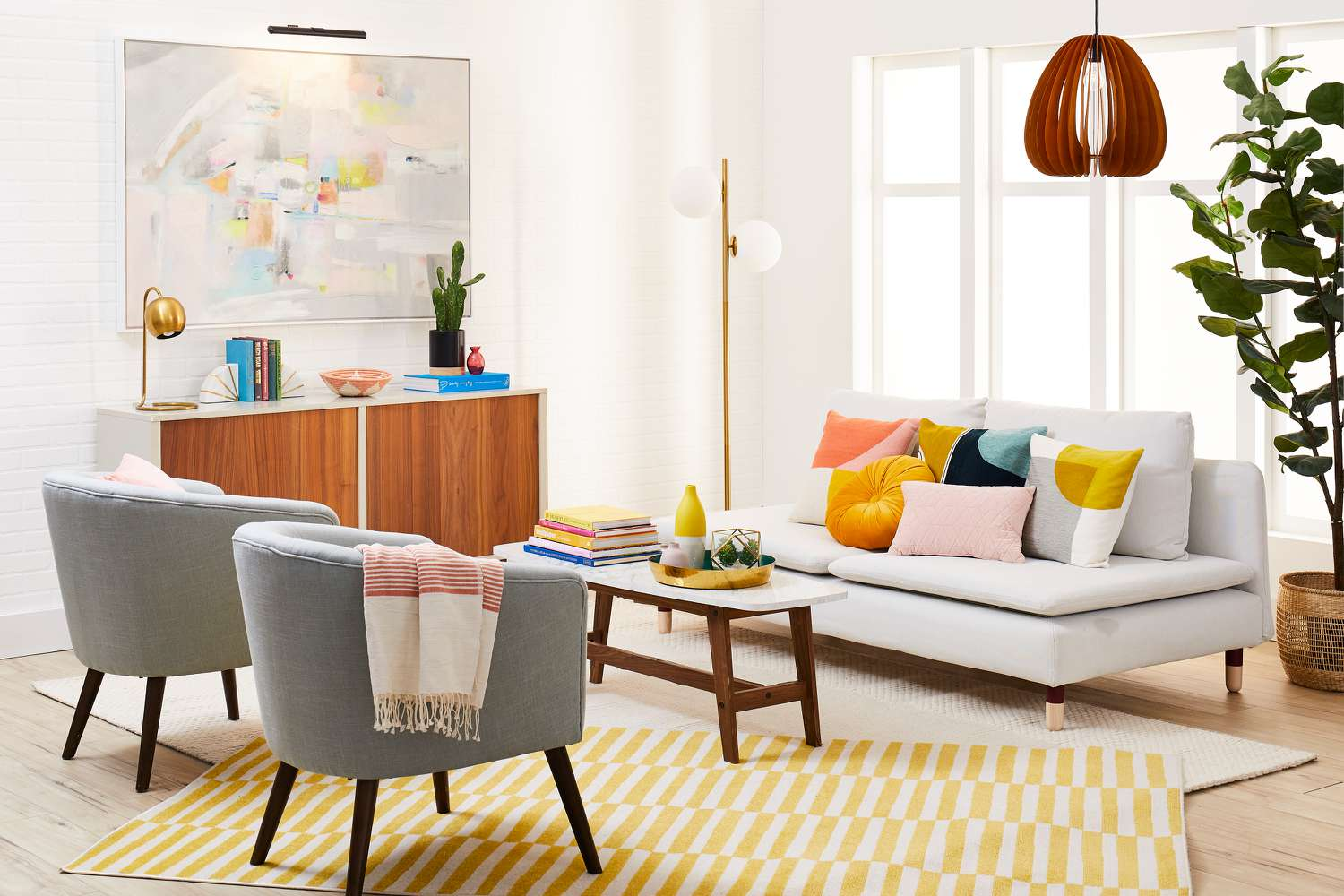
Contemporary design is popular in luxury apartments and newly-built homes, particularly in cities like London, Sydney, and Dubai. It is also seen in upscale urban developments and suburban areas where homeowners want a current, stylish aesthetic.
Contemporary design is ever-evolving, reflecting current trends and innovations in the design world. Unlike modern design, which refers to a specific historical style, contemporary design is fluid and can incorporate elements from various styles. It is known for its clean lines, open spaces, and use of a mix of materials and textures. Contemporary spaces often feature a neutral color palette, with bold accents used sparingly to add visual interest.
How to Use Contemporary Design in Your Project:
- Blend Comfort and Sophistication: Choose sleek furnishings that are comfortable and up-to-date.
- Mix Materials: Use a combination of wood, glass, metal, and stone to add depth and texture.
- Maintain Clean Lines: Keep spaces uncluttered with minimal but impactful decor pieces.
- Use Bold Accents: Introduce bold colors or statement art as focal points to draw the eye.
- Client Presentations: Utilize digital renderings and material samples to showcase versatility and trends.
3. Minimalist Design
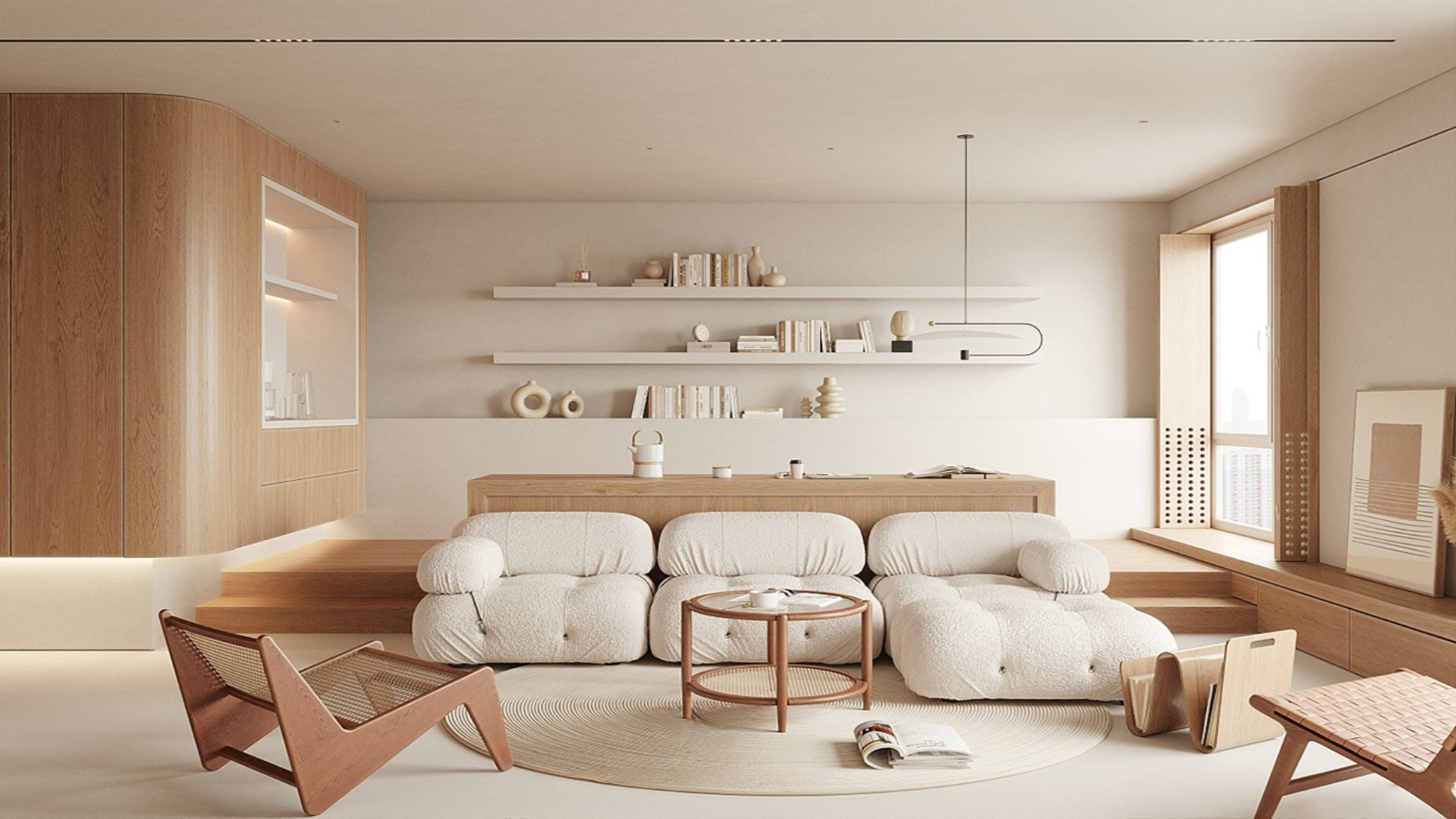
Minimalist design takes inspiration from the Japanese concept of Zen, focusing on simplicity, clarity, and the idea that less is more. This style is all about creating a space that is free from clutter, where every item has a purpose. It often features a monochromatic color scheme, with subtle variations in texture to add interest. The furniture and decor are simple, functional, and unadorned.
Minimalist design is widely adopted in Scandinavian countries, such as Sweden, Denmark, and Norway. It is also common in urban studios and apartments in cities like New York and Tokyo, where space is at a premium, and there is a desire for clean, clutter-free environments.
How to Use Minimalist Design in Your Project:
- Focus on Essentials: Incorporate only essential furniture pieces and decor.
- Choose High-Quality Materials: Opt for marble, wood, and metal to bring luxury into a simple design.
- Maximize Natural Light: Utilize large windows and minimal window treatments.
- Avoid Heavy Decorations: Use a few carefully selected items to add character and warmth.
- Client Presentations: Highlight how minimalism promotes tranquility using clean visualizations and mood boards.
4. Industrial Design
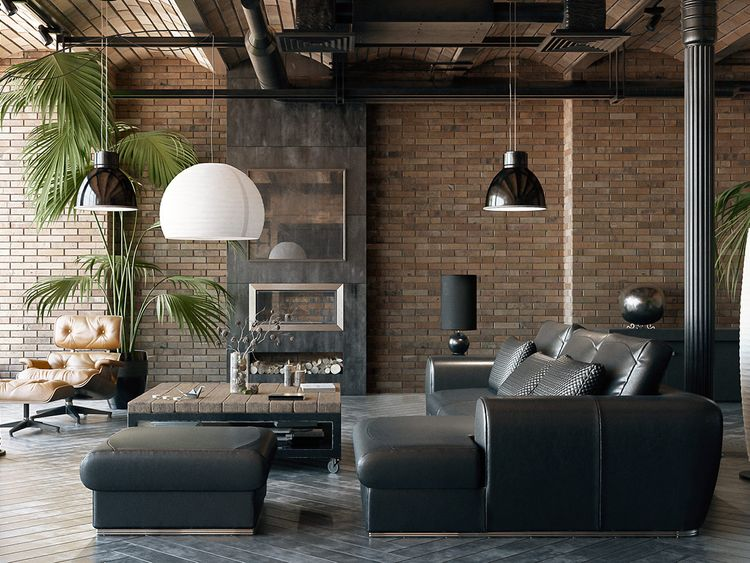
Industrial design draws inspiration from old factories and industrial spaces, emphasizing raw, unfinished elements like exposed brick, concrete, steel beams, and visible pipes. It celebrates the beauty of utility and the use of repurposed materials. This style often incorporates a neutral color palette with earthy tones and metallic accents, creating a rugged yet refined aesthetic.
Industrial design is commonly found in converted lofts and warehouse apartments in cities like New York, Chicago, and London.
How to Use Industrial Design in Your Project:
- Highlight Architectural Elements: Use exposed beams, brick walls, and concrete floors to create a raw aesthetic.
- Incorporate Functional Furniture: Choose pieces that are both practical and industrial, like metal stools and wooden tables.
- Use a Muted Color Palette: Stick to neutral tones with accents of metal and reclaimed wood.
- Add Vintage Touches: Include vintage lighting and decor to enhance the industrial feel.
- Client Presentations: Provide texture samples, such as brick or metal, and images of integrated industrial elements.
5. Scandinavian Design

Scandinavian design is prevalent throughout the Nordic countries, including Sweden, Denmark, and Finland. It is also popular in other parts of Europe and North America.
Scandinavian design is known for its emphasis on simplicity, functionality, and connection to nature. This style is characterized by light, neutral colors, natural materials, and clean lines. Scandinavian spaces are often bright and airy, with minimal decor and a focus on creating a cozy, welcoming atmosphere.
How to Use Scandinavian Design in Your Project:
- Incorporate Light Wood: Use light wood flooring and furniture to bring warmth and natural elements.
- Use a Muted Color Palette: Focus on whites, grays, and soft pastels for a serene environment.
- Add Cozy Textiles: Introduce wool throws, sheepskin rugs, and soft cushions for comfort.
- Maximize Natural Light: Opt for large windows and minimal window treatments.
- Client Presentations: Highlight cozy yet minimal aesthetics using imagery and texture swatches.
6. Traditional Design
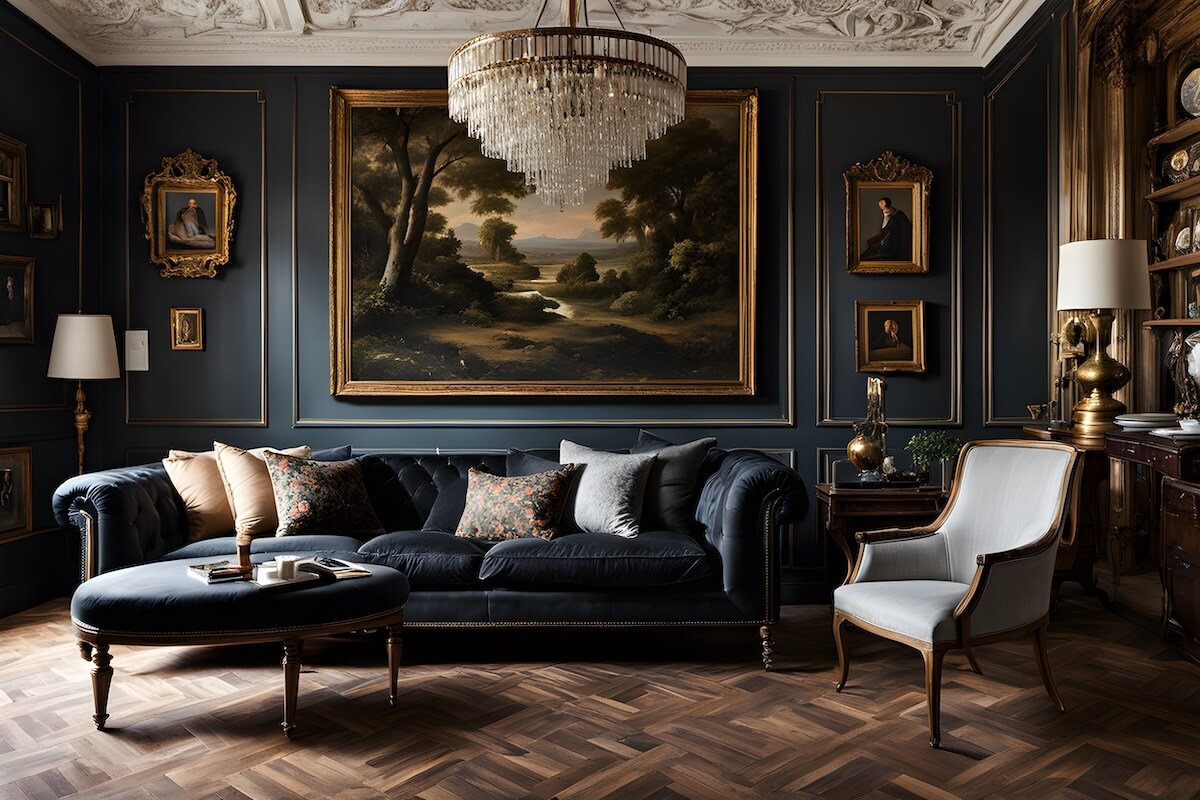
Traditional design is rooted in European decor from the 18th and 19th centuries and is characterized by its ornate details, rich colors, and classic furniture pieces. This style often features elements like heavy draperies, intricate moldings, and elegant fabrics, creating a sense of luxury and timelessness.
Traditional design is frequently found in older homes and estates in regions like the American South, English countryside, and European cities like Paris and Vienna. It’s also common in high-end residences and hotels that aim for a classic, elegant look.
How to Use Traditional Design in Your Project:
- Choose Classic Furniture: Opt for pieces with classic silhouettes and detailed woodwork.
- Use Rich Colors: Incorporate deep reds, greens, and golds for a luxurious feel.
- Add Luxurious Fabrics: Utilize velvet, silk, and brocade for upholstery and drapery.
- Include Decorative Elements: Use chandeliers, antique accessories, and framed artwork to enhance the traditional look.
- Client Presentations: Create mood boards with traditional patterns, textures, and high-end material samples.
7. Transitional Design

Transitional design blends the elegance of traditional design with the clean lines and simplicity of contemporary decor. It creates a balanced, harmonious space that feels both timeless and current. This style is known for its neutral color palettes, comfortable furniture, and the seamless integration of modern and traditional elements.
Transitional design is popular in suburban homes and upscale apartments, particularly in North America. Cities like Atlanta, Dallas, and Toronto often feature homes with a mix of traditional and contemporary elements, offering a versatile and welcoming style.
How to Use Transitional Design in Your Project:
- Use a Neutral Color Palette: Start with neutral tones as a foundation to allow other elements to stand out.
- Combine Furniture Styles: Mix traditional furniture with contemporary accents or art pieces.
- Layer Textures: Add depth using varied textures like linen, leather, and wool.
- Balance Old and New: Integrate modern lighting with classic furnishings to create a cohesive look.
- Client Presentations: Highlight the versatility of transitional design by showing different ways it can adapt to various tastes.
8. Mid-Century Modern Design
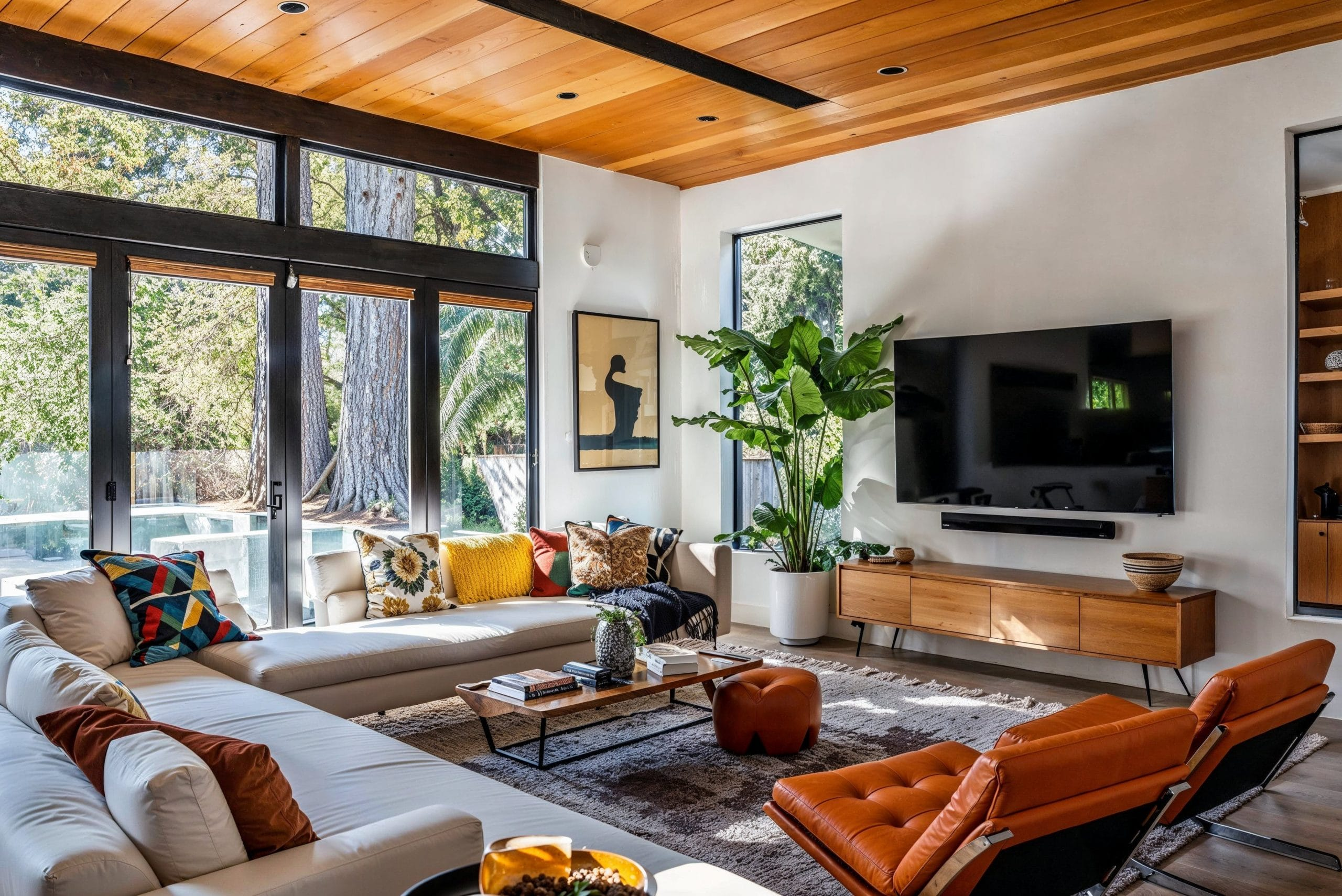
Mid-century modern design emerged in the mid-20th century and is characterized by clean lines, organic shapes, and a focus on functionality. It often features a mix of traditional and non-traditional materials, such as wood, metal, and plastic, and incorporates bold colors and geometric patterns.
It’s a design style widely found in homes built during the mid-20th century, particularly in California cities like Palm Springs and Los Angeles. These homes often feature open floor plans, large windows, and integration with the surrounding landscape.
How to Use Mid-Century Modern Design in Your Project:
- Select Iconic Furniture: Opt for furniture with sleek lines and organic forms typical of the era.
- Incorporate Bold Colors: Use colors like mustard yellow, teal, and olive green to add energy.
- Add Geometric Patterns: Use geometric rugs, cushions, or wallpaper to create visual interest.
- Mix Materials: Combine wood, leather, and metal to add texture and warmth.
- Client Presentations: Use visual aids that highlight iconic mid-century pieces and their retro appeal.
9. Bohemian (Boho) Design
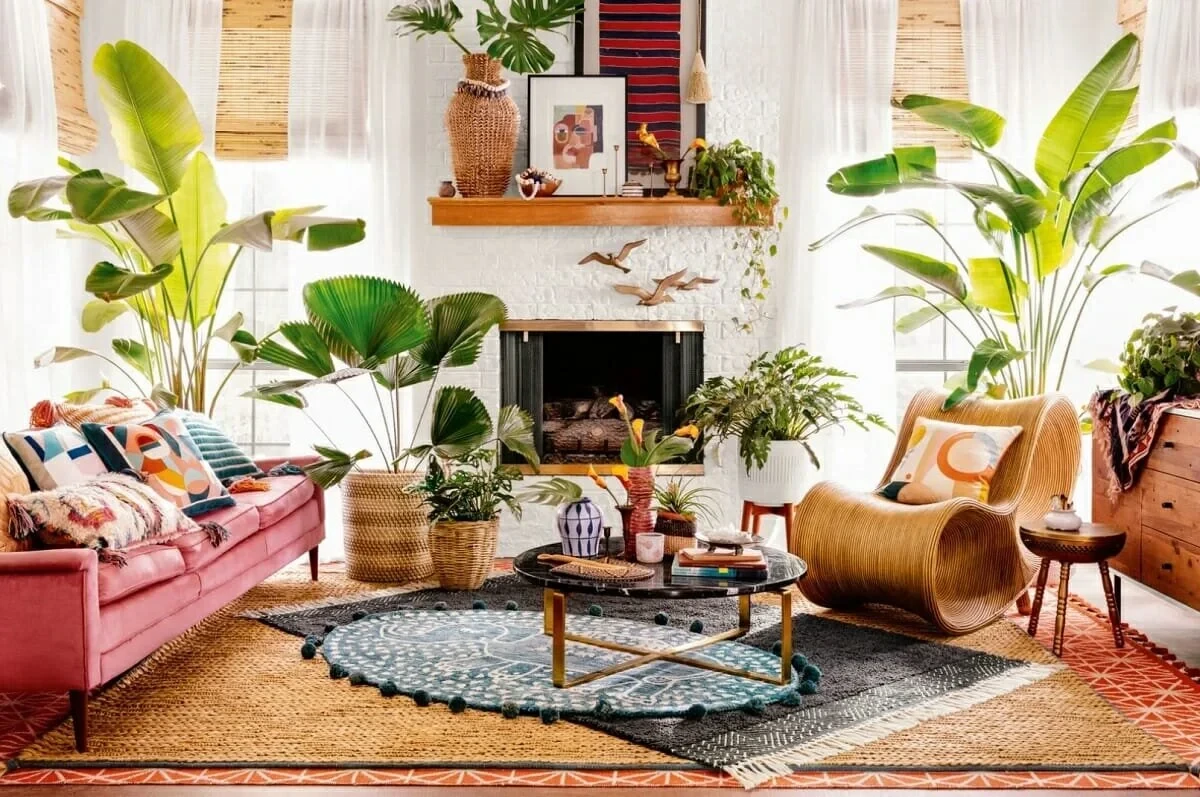
Bohemian design is commonly seen in eclectic apartments and homes in cities like San Francisco, Berlin, and Melbourne. It is also popular in artist communities and neighborhoods that value creativity and individuality.
Bohemian design is free-spirited, reflecting a mix of cultures, artistic expressions, and influences from around the world. It’s characterized by a rich variety of colors, patterns, and textures, creating a relaxed and laid-back atmosphere that feels personalized and unique.
How to Use Bohemian Design in Your Project:
- Layer Patterns and Textures: Combine different patterns and textures to add depth and interest.
- Use Earthy Colors: Incorporate rich, earthy tones and global-inspired decor like Moroccan rugs and Indian textiles.
- Add Natural Elements: Include plants and handmade items to create a natural, personal touch.
- Mix Furniture Styles: Blend furniture and accessories from different styles and periods for an eclectic look.
- Client Presentations: Highlight the style’s adaptability and personalization using diverse materials and visual examples.
10. Farmhouse Design
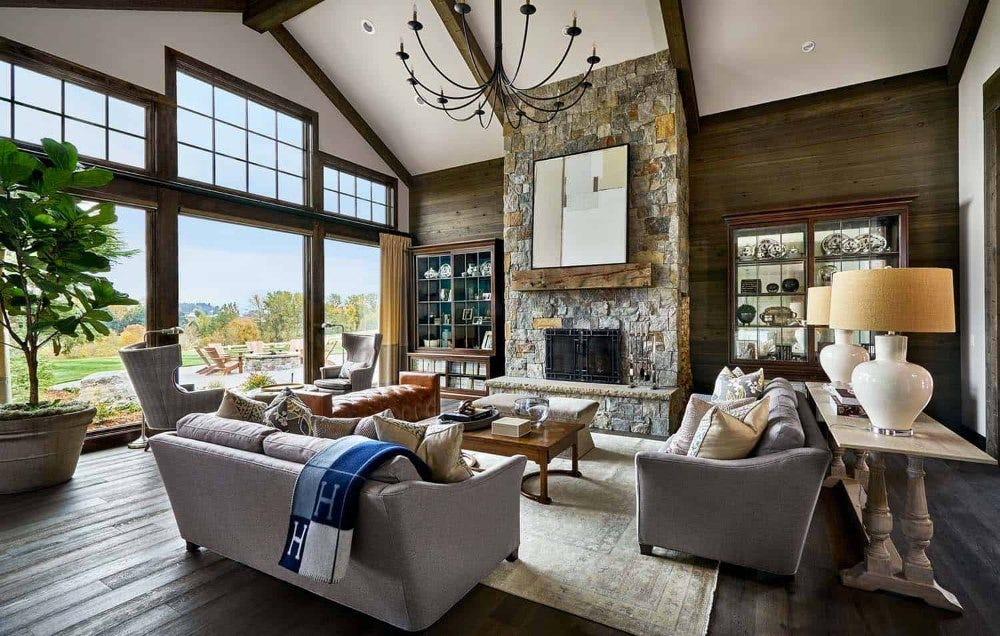
Farmhouse design is inspired by rural life and is characterized by its warmth, simplicity, and charm. This style often features natural materials, vintage furniture, and a neutral color palette, creating a cozy and inviting atmosphere. Farmhouse design often incorporates rustic elements like exposed beams, shiplap walls, and barn doors.
Farmhouse design is most commonly found in rural areas and suburban homes across North America, particularly in regions like the American Midwest and South. It is also popular in countries like Australia, where there is a focus on natural materials and rustic charm.
How to Use Farmhouse Design in Your Project:
- Use Reclaimed Wood: Incorporate reclaimed wood for furniture and accents to add character.
- Choose Neutral Colors: Opt for a palette of soft whites, beiges, and earth tones for a warm, inviting environment.
- Include Farmhouse Staples: Add elements like open shelving, apron-front sinks, and farmhouse tables.
- Add Rustic Features: Incorporate shiplap walls and barn doors to enhance the farmhouse feel.
- Client Presentations: Use mood boards that showcase farmhouse comfort and warmth with natural materials like wood and stone.
11. Coastal Design
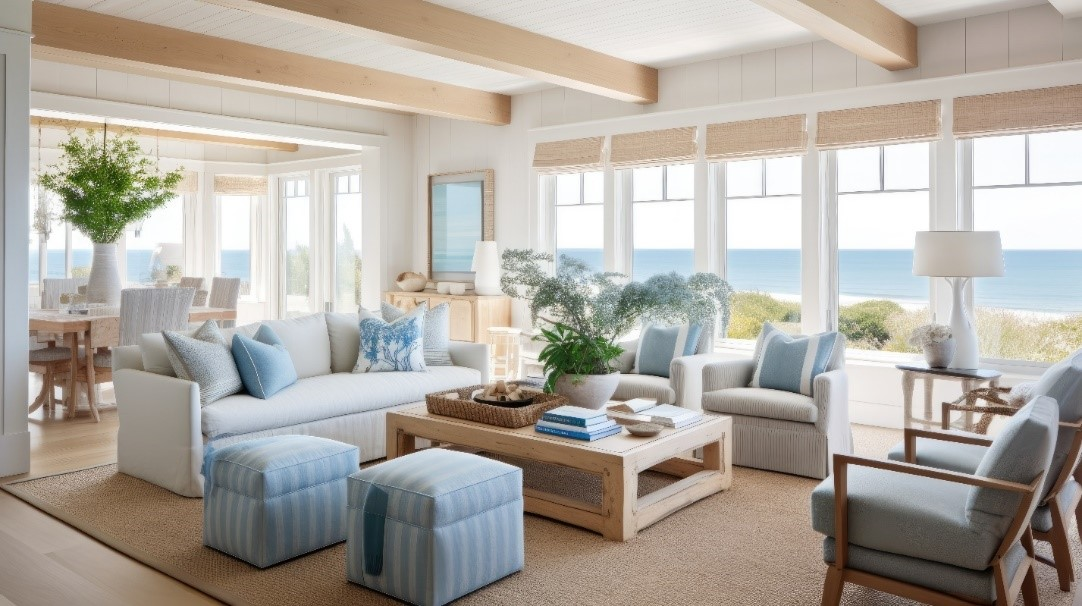
Coastal design is inspired by the relaxed and breezy atmosphere of the beach. It features light, airy spaces with a color palette dominated by whites, blues, and neutrals. Natural materials like wood, rattan, and linen are commonly used, along with nautical elements and ocean-inspired decor.
Coastal design is mostly represented in beach houses and seaside homes in regions like the Hamptons, Florida, and the Mediterranean coast. It is also popular in coastal towns and cities where the ocean is a significant part of the lifestyle and culture.
How to Use Coastal Design in Your Project:
- Create a Light and Open Feel: Use a palette of soft blues, whites, and sandy tones to evoke the seaside.
- Incorporate Natural Textures: Include jute rugs, wicker furniture, and driftwood accents for a natural touch.
- Add Nautical Elements: Use rope decor, seashells, and marine-inspired artwork to enhance the theme.
- Maximize Natural Light: Large windows or sheer curtains can help bring in natural light and enhance the airy vibe.
- Client Presentations: Use visual boards that evoke tranquility and relaxation, emphasizing the connection to nature.
12. Eclectic Design
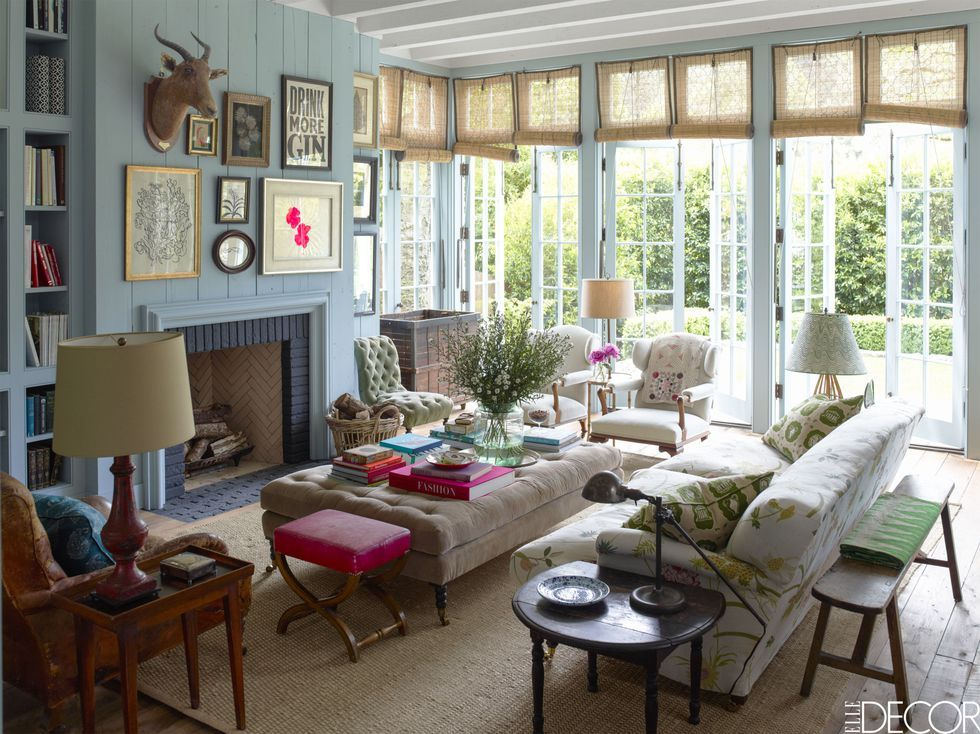
Eclectic design is all about mixing different styles, periods, and textures to create a personalized and unique look. It embraces contrast and combines various elements that may not traditionally go together, resulting in a harmonious yet diverse space. This style often features bold colors, varied textures, and a wide range of furniture and decor.
Eclectic design is found in diverse urban neighborhoods around the world, such as Brooklyn in New York, Shoreditch in London, and Fitzroy in Melbourne. These areas are known for their artistic communities and bohemian vibe, which influence the interiors of homes and apartments.
How to Use Eclectic Design in Your Project:
- Mix Furniture Styles: Combine different styles and periods to create a unique, personalized look.
- Layer Textures: Use a variety of textures like velvet, leather, and silk for a rich, dynamic environment.
- Use a Cohesive Color Palette: Tie different elements together with a unifying color scheme.
- Include Unique Pieces: Add vintage finds, statement art, or globally inspired decor for individuality.
- Client Presentations: Showcase how eclectic design allows for creativity and self-expression with diverse materials and visual examples.
13. Rustic Design
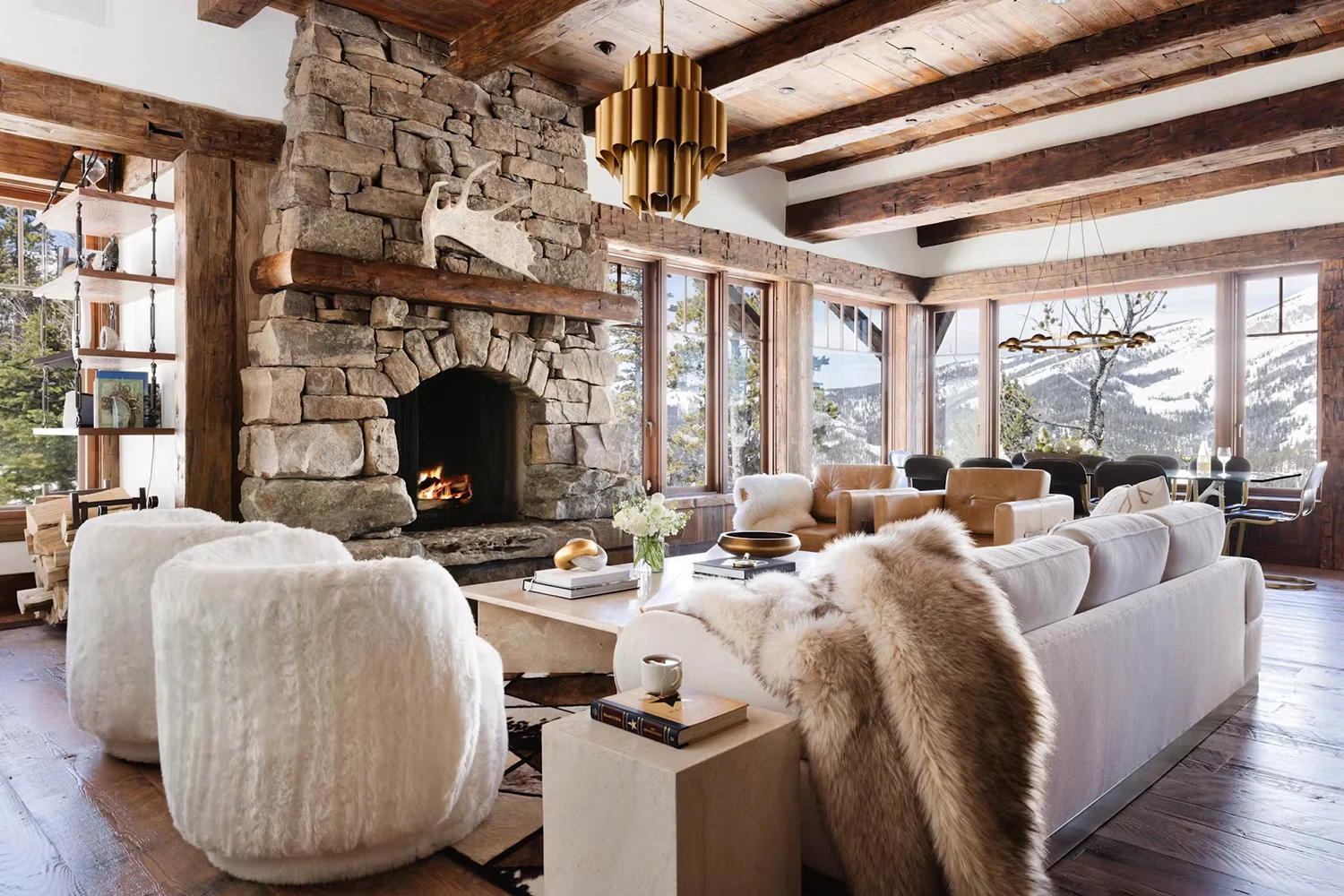
Rustic design draws inspiration from nature, focusing on raw, unfinished elements like wood, stone, and metal. This style is known for its warm and cozy feel, often incorporating vintage furniture, natural textiles, and earthy colors. Rustic interiors celebrate natural beauty and craftsmanship, emphasizing comfort and simplicity.
Rustic design is often seen in cabins, lodges, and countryside homes in regions like the Rocky Mountains, the Scottish Highlands, and the French Alps. It’s also popular in vacation homes and retreats that emphasize a connection to nature and a simpler way of life.
How to Use Rustic Design in Your Project:
- Use Natural Materials: Incorporate reclaimed wood and natural stone to create a strong foundation.
- Choose Handmade or Antique Furniture: Opt for furniture that looks crafted with visible grain and natural imperfections.
- Opt for Earthy Colors: Use a muted palette with shades of brown, beige, and green to evoke an outdoor feel.
- Add Cozy Textiles: Include wool throws, fur rugs, and woven baskets to enhance warmth and texture.
- Client Presentations: Highlight natural materials and the focus on creating a warm, inviting atmosphere.
14. Art Deco Design
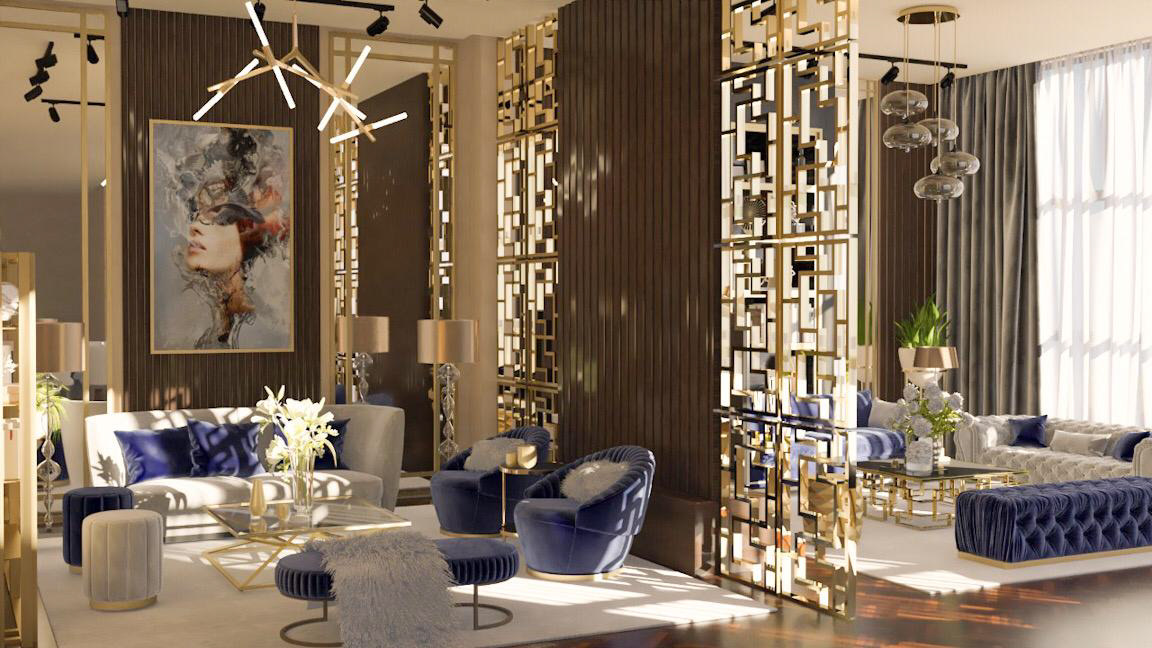
Art Deco is a glamorous and luxurious design style that emerged in the 1920s and 1930s. It features bold geometric patterns, metallic finishes, and rich, vibrant colors. Art Deco is known for its opulent, sophisticated look, often incorporating luxurious materials like marble, brass, and velvet.
Art Deco design is prominently found in historic buildings and apartments in cities like Miami, New York, and Paris. Many 1920s and 1930s buildings retain their original Art Deco features, including geometric patterns and metallic finishes, making them a distinctive part of the cityscape.
How to Use Art Deco Design in Your Project:
- Incorporate Geometric Patterns: Use bold geometric designs in wallpaper, rugs, and textiles.
- Use Rich Colors: Opt for colors like emerald green, deep blue, and gold for a luxurious feel.
- Choose Sleek Furniture: Select furniture with stylized shapes and lacquered finishes for an opulent look.
- Add Metallic Accents: Include mirrors, glass, and metallic finishes to enhance the sophistication.
- Client Presentations: Showcase the glamour and elegance of Art Deco with visual boards that highlight key elements like patterns and luxurious materials.
15. French Country Design
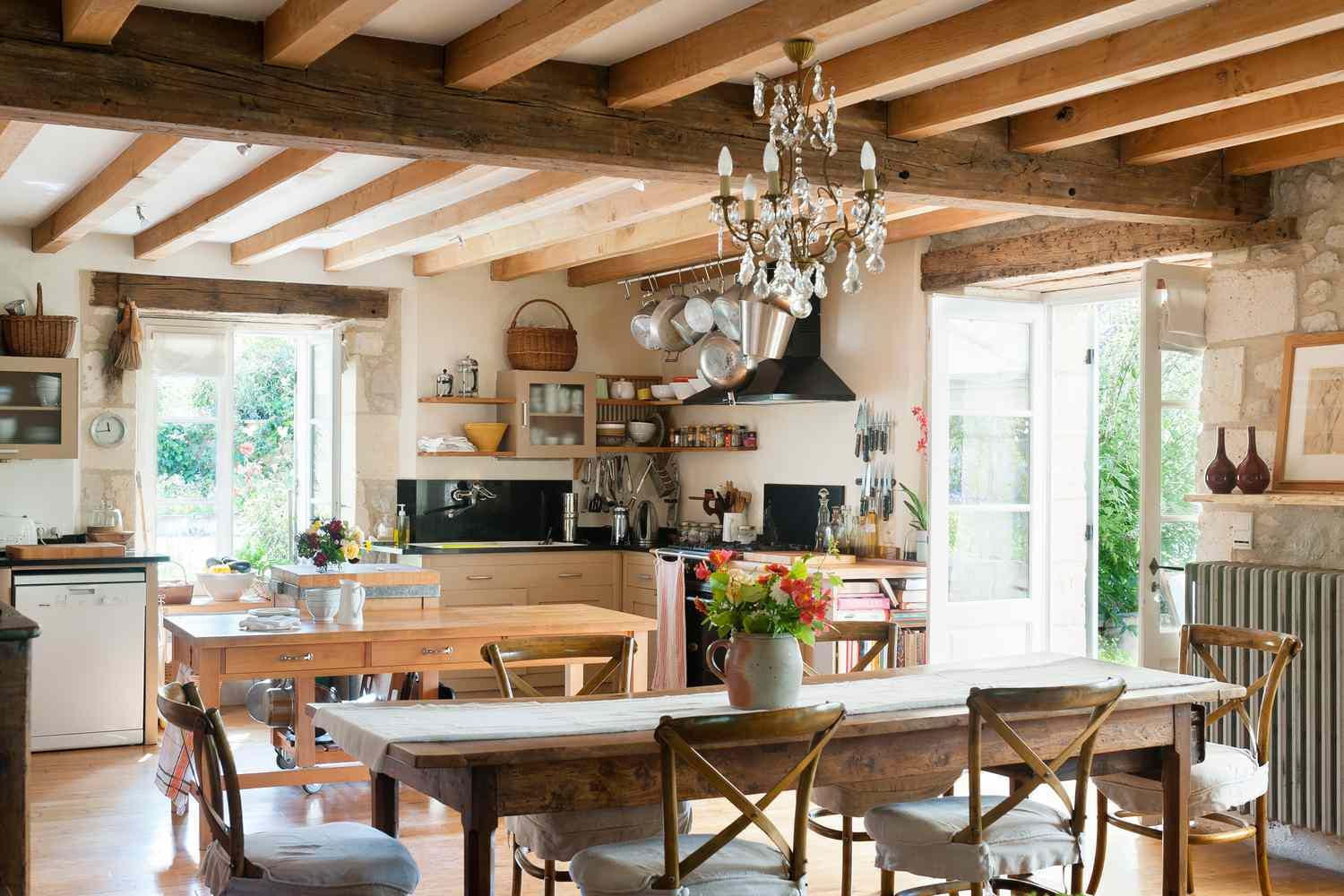
French Country design is inspired by the rustic charm of rural Provence. It features soft, muted colors, natural materials, and vintage furniture. This style is known for its elegant yet comfortable feel, combining antique elements with a warm, lived-in look.
It’s a popular style in North American homes that seek to emulate the rustic yet refined charm of the French countryside.
How to Use French Country Design in Your Project:
- Use Soft Colors: Incorporate a palette of whites, creams, and pastels for a soft, inviting atmosphere.
- Choose Distressed Furniture: Select pieces with distressed finishes and antique detailing to add character.
- Incorporate Natural Materials: Use wood, stone, and linen for a rustic yet elegant feel.
- Add Decorative Elements: Include floral patterns, vintage ceramics, and wrought iron accents for a classic French touch.
- Client Presentations: Highlight the style’s elegance and comfort with visual boards and samples of natural materials and vintage decor.
While this list is not exhaustive, mastering these 15 interior design styles will help you create beautiful, functional spaces that cater to your clients’ tastes.
Whether you’re designing a modern loft or a rustic farmhouse, knowing the characteristics of each style will allow you to make informed decisions and deliver stunning results.
Ready to start your next Interior Design Project? Rayon helps you to:
- Customize Plans with Styles: Use our extensive library of styles, including textures and hatches, to easily showcase specific interior design styles for any project.
- Enhance Detail with 2D Blocks: Add volume and detailed objects with over 2,000 2D blocks available, perfect for creating rich, dynamic layouts.
- Precision in Design: Utilize our precision tools to design accurate geometrical forms, ensuring both functionality and aesthetic appeal in your projects.
👉 Try Rayon for free